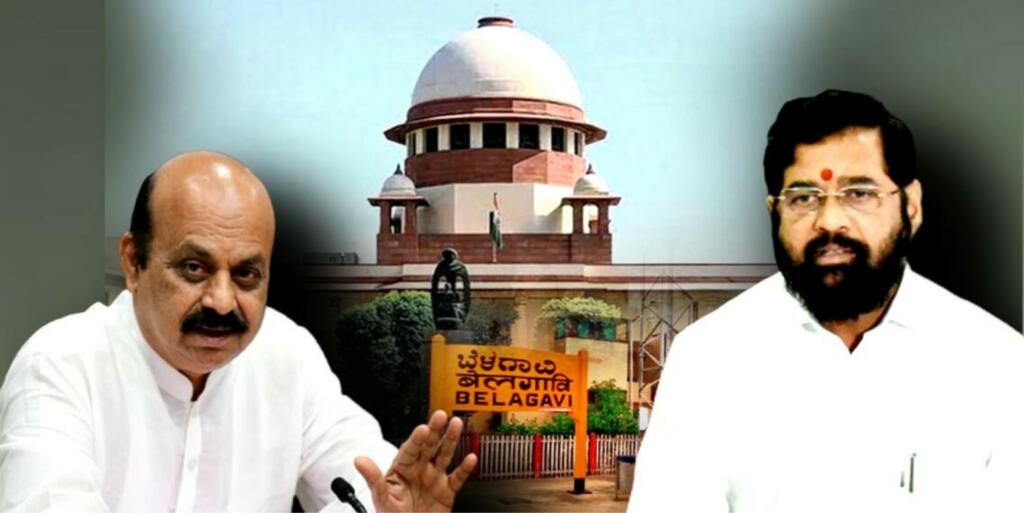Belagavi Border Dispute: India has been ruled by the Sahebs, first Gora and after the colonial rulers left, they handed the system created by them to Bhura Sahebs. The Bhura Sahebs were of Indian origin, however, their loyalties lay somewhere else. The Goras, while leaving had hurriedly demarcated the regions and drawn Radcliffe Line, without taking any cognisance of the on-ground reality.
Their staunch loyal followers in the government post-Independence continued with the same destructive modus operandi. And as a result, India is still marred with border disputes. Multiple states are battling the same issues to date, be it in the North East or down South. One such issue is Belgaum.
What is Belagavi/Belgaum border dispute?
Belagavi or Belgaum region, which is currently a part of Karnataka, has been claimed by Maharashtra as its own. And the Belagavi Border Dispute has been a bone of contention between the two states. The disputed region involves three urban settlements Belagavi, Karwar and Nippani and 814 villages.
The Belagavi Border Dispute has been dragged to court time and again. However, any concrete solution has not yet arrived and as mentioned earlier, the Bhura babus and their distance from the ground reality can be credited for the same. But, why am I blaming the governments of independent India for this? Let me explain from the beginning.
A look at the history
The villages and settlements I named earlier are situated at the border region of present-day Maharashtra and Karnataka. However, the region was once a part of the Bombay Presidency, which happened to be a multilingual province that included Kannada districts such as Belagavi, Vijaypura, Dharwad and Uttar Kannada.
After India’s independence in 1947, the region, specifically, Belgaum fell under the Bombay state. The Marathi-speaking politicians who dominated Belgaum had requested to include the district in the proposed Samyukta Maharashtra state. Although, the 1881 census suggests that in Belgaum, 64.39 per cent of the population was Kannada speaking and 26.04 per cent spoke Marathi.
Then arrived the States Reorganisation Act of 1956, which made Belgaum and 10 talukas of Bombay state a part of Mysore state, which was later renamed Karnataka in 1973.
The fighting that continues to date
The Bombay government, however, did not agree with the reorganisation and registered its protest. To look into the matter, Mahajan Commission was formed under former Chief Justice Mehr Chand Mahajan in 1966. The Commission in its report granted 264 villages to Maharashtra and 264 villages to Karnataka. However, it granted Belgaum to Karnataka, then Mysore.
In 2006, the Maharashtra government filed a petition in the Supreme Court of India to stake a claim over Belgaum. However, the court ruled that the issue must be resolved through mutual negotiation and linguistic criterion should not be considered as it may create practical problems. The case is still being heard in court.
Belagavi Border Dispute back in the news
The infamous border dispute between Maharashtra and Karnataka- the Belagavi/ Belgaum issue is back in the headlines as Kannada organisations have accused the Karnataka government of not taking up the border issue seriously.
Ashok Chandaragi, convenor of Kannada organisations in the district feels that the Karnataka government’s preparations are not even 20% and the actions of the government are not known to the public. The organisations have also complained about the Karnataka State Border protection commission becoming inactive. Chandaragi demanded that the ‘state government must prioritise the case and take the public and pro-Kannada organisations into confidence.’
The current situation
As per the recent development, the Maharashtra government has appointed two ministers, Chandrakant Patil and Shambhuraj Desai, to coordinate with a legal team regarding the court case.
Following that the Karnataka government has also formed a team of lawyers to strengthen its claim and position before the court of law. Bommai’s team comprises former attorney general Mukul Rohtagi, Shyam Diwan, former Karnataka advocate general Uday Hilla and Maruti Jirale.
The drawback of such disputes
It is a well-known and accepted fact that while the states were being formed, political and historical aspects were taken into consideration rather than linguistic or cultural divisions. All that the government focused on was administrative convenience and there was no communication with the common masses. This has given rise to multiple territorial disputes among Indian states.
Territorial claims in border areas between the many Indian states have led to several bitter disputes. Those disputes, at times, have sparked violent clashes. And such disputes are not in the national interest.
Support TFI:
Support us to strengthen the ‘Right’ ideology of cultural nationalism by purchasing the best quality garments from TFI-STORE.COM
